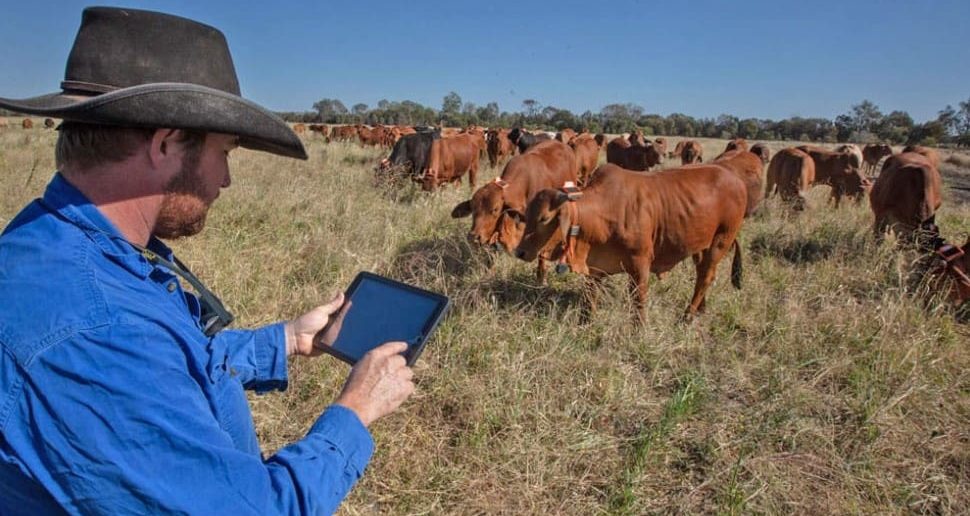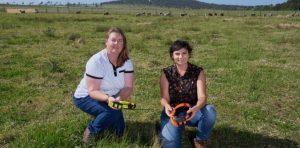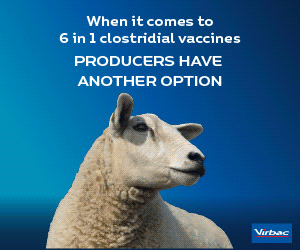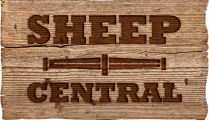
Virtual fencing being trialled with cattle. Image – Agersens.
A NEW South Wales Government decision to legalise virtual fencing for cattle but not sheep at this stage has reignited interest in states where the technology is still prohibited or only allowed for research purposes.
The Minns Labor Government last announced virtual stock fencing will be legalised across the state providing landholders with a new effective way of controlling cattle.
However, many working in the virtual fencing sector are hopeful that regulatory approval for virtual fencing for cattle will also lead to its acceptance for other livestock such as sheep and goats.

UNE PhD student Tellisa Kearton, left, and post-doctoral researcher Danila Marini with sheep collars used as part of the virtual fencing research. Image – Supplied.
The NSW decision, once implemented, would bring the state into line with Western Australia, Tasmania, Queensland and the Northern Territory, where virtual fencing is also allowed for cattle.
Victorian animal welfare legislation still prevents broadscale commercial use of virtual fencing for any livestock, although research has been allowed. In South Australia, any use of virtual fencing technology with livestock is prohibited.
The NSW announcement prompted Livestock SA to call on the South Australian Government to urgently reform outdated regulations that continue to block livestock producers from using virtual fencing.
A critical technology for livestock farming and cropping
Dedicated Victorian virtual fencing advocate John Marriott said virtual fencing is a critical technology that is becoming available to the livestock industry.
 “The livestock sector is far behind the cropping sector in adopting new technology it’s not funny.
“The livestock sector is far behind the cropping sector in adopting new technology it’s not funny.
“And the only hurdle at the moment as far as I can see at the moment is that the animal welfare movement and the livestock producers will not sit down around the table and explain the benefits to agriculture – that’s the big block as far as I’m concerned.”
Mr Marriott agreed virtual fencing would also enable broadacre operations to adapt to livestock farming and/or cropping depending on season and market forces. He said farmers converting properties from livestock to cropping often pull out physical fences, limiting their ability to get back into livestock.
“It’s not only applicable to the livestock industry, it’s applicable to the farms that want to graze failed areas of crop – it gives you that flexibility to manage the business.
“You can manage the environment and the feed intake of the animal to match its required growth rate,” he said.
“The Victorian scene just has to change and it could change if the animal welfare movement would sit down with the rural community over a cup of coffee or a beer or whatever.
“That’s how the Landcare movement started.”
Virtual fencing benefits
A statement from NSW Minister for Agriculture Tara Moriarty said the Minns Government has listened to Orange MP and virtual fencing campion Phil Donato and the recommendations of the Legislative Assembly Committee Inquiry into the Prevention of Cruelty to Animals Amendment (Virtual Stock Fencing) Bill 2024, plus the NSW Farmers and animal welfare organisations, to now move to legalise virtual fencing for cattle.
Virtual fencing contains cattle without the need for conventional physical fencing made of posts and wire, instead using devices such as neck bands or collars that use GPS technology and sensory cues to manage their movement. These devices can also monitor the activity, health and welfare of cattle.
Using GPS coordinates, farmers can use the technology to establish virtual internal paddock boundaries, rather than having to construct new or maintain existing physical fencing. This enables flexible paddock reconfiguration and reduces costs on fence repair, and address other issues shown through data analysis.
The NSW inquiry report recommended the development of a code of practice to specify animal welfare requirements. The NSW Government will ensure necessary safeguards for animal welfare, biosecurity and public safety are in place for the introduction of virtual fencing.
Consultation will be undertaken on the proposed approach to allow virtual fencing in NSW before regulatory changes are made under Prevention of Cruelty to Animals legislation.
Ms Moriarty said the NSW Government has listened to Phil Donato the MP for Orange and to the farming industry and will work with industry and animal welfare groups to ensure the right balance for delivering virtual fencing on farms.
“These changes seek to reduce costs for farming and to enable agile paddock formation across land holdings to meet the needs of farmers while also protecting the welfare of cattle.
“The government will now consider amendments to the POCTA Regulation and undertake consultation with key stakeholders including industry and animal welfare organisations.”
Mr Donato said is pleased the Minns Government and Ms Moriarty have listened, worked through the issues and agreed to legalise virtual fencing in NSW through regulation.
“I congratulate the Government for their support, and I now look forward to advising Government to ensure we get the regulatory settings right so our farmers can reap the many benefits virtual fencing can deliver.
“It is imperative that government support scientific research-supported technological advancements in agriculture, so that our farmers have access to innovative tools which benefit the environment, animal management, their ag business and remain competitive in the marketplace,” he said.
“The benefits of virtual fencing cannot be overstated; in fact, a multi-generational Tasmanian dairy farmer recently told me that virtual fencing has been life altering for him and his family, and that if virtual fencing had not been made available to the business he manages he would have walked away from the industry years ago – completely burnt out.
“For the past three-plus years I have been lobbying the NSW Government non-stop to legalise this innovative livestock management technology, culminating in my introduction of a bill to legalise virtual fencing.”
What South Australia thinks
Livestock SA Chair Gillian Fennell said virtual fencing has been trialled successfully across Australia for nearly two decades and has strong support from producers in South Australia.
“South Australian producers are forward-thinking and ready to adopt new technologies that improve productivity, support environmental management, and maintain high standards of animal welfare.
“Virtual fencing has been shown to reduce fencing costs, improve land and stock management, and support animal safety in emergencies like bushfires and floods,” she said.
“It is time South Australia gave producers access to this tool.
“In Livestock SA’s annual producer survey, support for virtual fencing has grown significantly,” Ms Fennell said.
“In 2024, 85 percent of respondents said they support its use, up from 44 percent in 2023.
“The message from producers is clear: they want the option to use this technology, and they want it now.”
Ms Fennell said through the Animal Welfare Act review last year Livestock SA received assurances from the State Government that the regulations would be amended to enable the technology to be used in our state.
“Other states are getting on with it.
“We need to stop dragging our feet and give South Australian producers access to a technology that is already transforming livestock management across the country,” she said.
Livestock SA said virtual fencing allows for more targeted grazing strategies, helps exclude stock from environmentally sensitive areas, and enables safer and more efficient management of livestock in extensive systems. It also supports animal welfare outcomes by reducing the need for physical mustering and handling, the farmer body said.
Livestock SA said despite these benefits, virtual fencing remains prohibited in South Australia due to outdated regulatory definitions. Livestock SA has repeatedly called for changes to the Animal Welfare Regulations 2012 to allow commercial use of electronic collars for cattle, sheep and goats.
Read Livestock SA’s latest submission on the issue: livestocksa.com.au/assets/lsa/documents/20240531-Submission-to-DEW-re-Draft-Animal-Welfare-Bill-2024.pdf
NSW Farmers backs Minns Government decision
NSW Farmers’ Animal Welfare Committee chair Rob McIntosh said Agriculture Minister Tara Moriarty’s announcement was a sign of positive change on the horizon for many farmers across the state.
“Across Australia and even the world, farmers are already making the most of virtual fencing, and it’s about time we do the same here in NSW.
“This technology can save lives by helping move livestock to safe areas in floods, fires or other natural disasters, without putting humans or animals at risk,” he said.
“It can also help reduce fencing costs, control noxious weeds and help with a whole other host of things on-farm – there’s almost no boundaries to what this technology can do.”
Mr McIntosh said regulations must be introduced swiftly to ensure the technology could be rolled out across NSW, with many harboring hope the technology could also soon be extended for use on other livestock.
“These fences are a game changer for farmers, and we are excited about the opportunities they provide for livestock management in NSW.
“Enabling us to use this technology with cattle is a real leap forward, and we hope that the technology can be developed and rolled out for use with other livestock in the future,” he said.

HAVE YOUR SAY